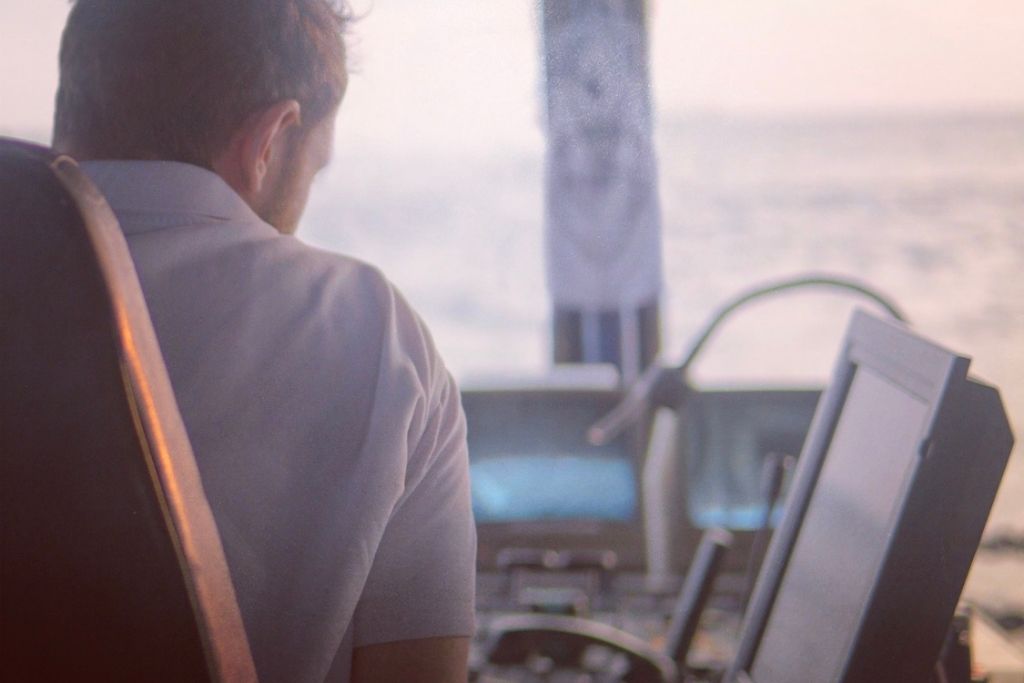From Deckhand to Captain
As a young twentysomething, you might not have your sights set on climbing the ranks from Deckhand to Captain. However, with the right attitude and love for the industry, this highly esteemed title may be a realistic goal.
Not for the faint hearted, the ambitious career path is taxing as it is rewarding. Read on as we discuss the high-level requirements for your professional journey from Deckhand to Captain.
Deckhand to Captain, Step 1:
Powerboat Level 2 and VHF / SRC marine radio certificate
Royal Yachting Association (RYA) Powerboat Level 2 (PB2) is an introductory powerboat training course. Also, considered a must-have in the industry because 98% of superyachts have watercraft on-board, such as jet skis and powerboats. The two-day course provides the skills and knowledge necessary to operate a powerboat up to 10 meters in length. Forming the basis of the International Certificate of Competence, this course covers,
- Launching and recovery
- Boat handling
- Securing to a buoy
- Anchoring
- Leaving and coming alongside
- Man overboard
A radio is an important piece of safety equipment on-board, which is why correct usage procedures are vital. The Short-Range Certificate (SRC) is the minimum qualification required to operate VHF (Very High Frequency) and DSC equipment (Digitised Message Broadcast). This includes both fixed and handheld equipment using international channels. On completion, the certification will enable unsupervised radio usage as well as the ability to supervise others usage. The one-day course will master the following,
- Basic radio operation
- Correct frequencies (channels) to be used
- Distress, emergency and medical assistance procedures
- Ship to shore calls
- Digital Selective calling (DSC) using simulators
- Global Maritime Distress and Safety System (GMDSS)
- Emergency Position Indicating Radio Beacons (EPIRBS)
- Search and Rescue (SART)
Deckhand to Captain, Step 2:
RYA Day Skipper Theory Shorebased Certificate
Taught over 40 hours, this theoretical course will equip students with enough knowledge to navigate familiar waters by day. Providing a comprehensive introduction to cruising for inexperienced skippers, the course will also touch on the basics for lights, for night cruising. Course topics include,
- The basics of seamanship
- The essentials of coastal navigation and pilotage
- Chartwork
- Electronic charts
- Position fixing
- Plotting a course to steer
- Weather forecasting and meteorology
- Tides
- Collision regulations
- Construction, parts and equipment of a cruising boat
- Emergency and safety procedures including distress calls, use of flares, safety harnesses, life jackets and life rafts.
Deckhand to Captain, Step 3:
RYA Intermediate Powerboat course
Building on previous RYA courses, this two-day course bridges the gap between PB2 and the Advanced Powerboat courses. It aims to teach the standard required to complete a short coastal passage by day on coastal waters using both traditional and electronic navigational techniques. More time is given to,
- Planning a day cruise
- Boat preparation
- Boat handling
- Pilotage
- Passage making
- Man overboard
Deckhand to Captain, Step 4:
RYA RADAR Operators course
Radar is the most versatile of all electronic navigation aids and is an important and effective tool. However, it can easily mislead those who don’t know how to adjust controls, understand its limitations, or interpret images correctly. As superyacht crew, the radar is generally used to conduct vessel tracking on a secondary radar screen during navigational watches. This one-day course assists in navigation and collision avoidance, covering
- How the radar set works
- How its adjustments and features affect the way it works
- Target definition
- Radar reflectors
- Types of radar display
- Radar plotting
- The use of radar in navigation and collision avoidance
Deckhand to Captain, Step 5:
RYA Coastal Skipper/Yachtmaster Shorebased
The advanced theoretical course builds on the knowledge gained from the shorebased Day Skipper course. Taught over 40 hours, the content is designed to stretch navigational knowledge. Equipping skippers to navigate safely on coastal and offshore passages both during day and night, course syllabus includes
- Position fixing
- Course shaping and plotting
- Tidal knowledge
- Use of almanacs and admiralty publications
- Electronic position finding equipment
- Taking and interpreting forecasts
- Plotting weather systems
- Weather predictions using a barometer and by observation
- Collision regulations
- Customs and excise regulations for cruising abroad
Deckhand to Captain, Step 6:
RYA Advanced Powerboat course
By now, skippers should be confident and practiced coastal powerboater’s. The 2-day course is the pinnacle of the RYA Powerboat scheme and requires experience in coastal powerboating for several seasons. Navigation at planning speed, weather, other challenges, and undertaking a night time passage will be covered during the course. The course outline entails,
- Preparation for Sea
- Boat Handling
- Passage Making and Responsibility as Skipper
- Pilotage
- Meteorology
- Rules of the Road
- Use of Engines
- Emergency Situations
- Night Cruising
Deckhand to Captain, Step 7:
RYA / MCA (Maritime Coastguard Agency) Advanced Powerboat Examination
The final step! This exam is a practical day and night time test of boat handling and navigation, in the type of craft applicable to the National Powerboat Scheme.
The entry requirements include,
- Minimum age: 17
- Knowledge of navigation and chart work to Coastal skipper level
- RYA VHF radio license
- First Aid at Sea Certificate (STCW)
- Logged Sea Time, 30 days, 2 as skipper, 800 miles, 12-night hours.
- Logged Sea Time if you hold the Advanced course certificate, 20 days, 2 as skipper, 400 logged miles and 12-night hours (in addition to the sea time on the course)
Hot tip! There is a big difference between a deckhand who gained their 800 miles through relevant practical experience vs cleaning the stainless steel.
Congratulations! You’re a qualified Skipper!
The MCA recognises this qualification and could result in a complete change of career direction, including an increase in responsibility, seniority and pay. The door is now open to work on vessels up to 24m in length, operating in category 3, 4, 5 and 6 waters – that is up to 20 miles from a safe haven – day & night.
Begin your journey from Deckhand to Captain
If you’re serious about your career, feel free to contact our affiliates PYA for personalized advice. PYA have options that suits your position within the professional yachting community.

We are not a yacht management company; rather an extension of your crew, acting as a landbased bridge to your shoreside counterparts. Virtual Pursers – The future of seamlessly, effortlessly, and efficiently navigating yacht administration. For more information contact info@virtualpursers.com or call +44 203 514 0413.



